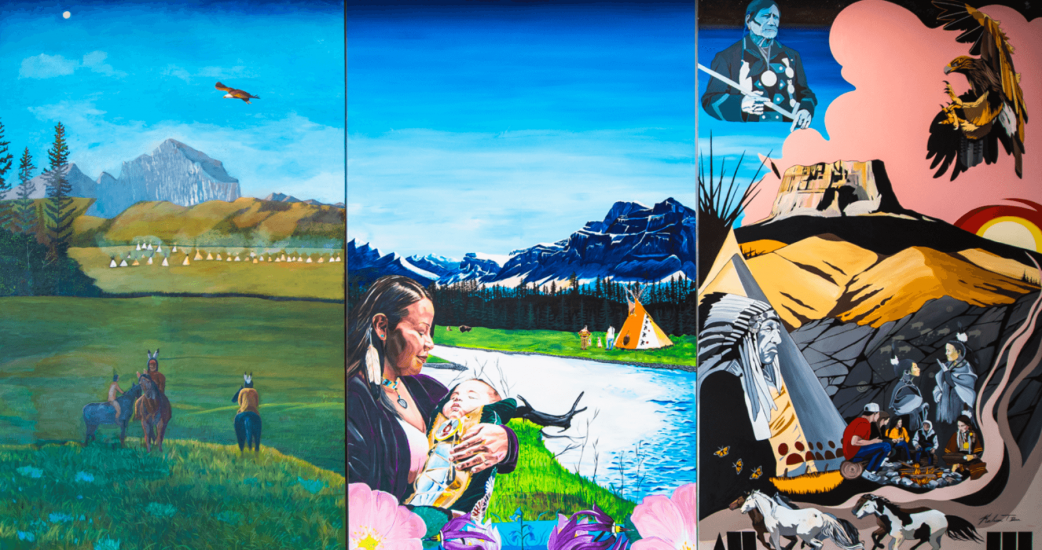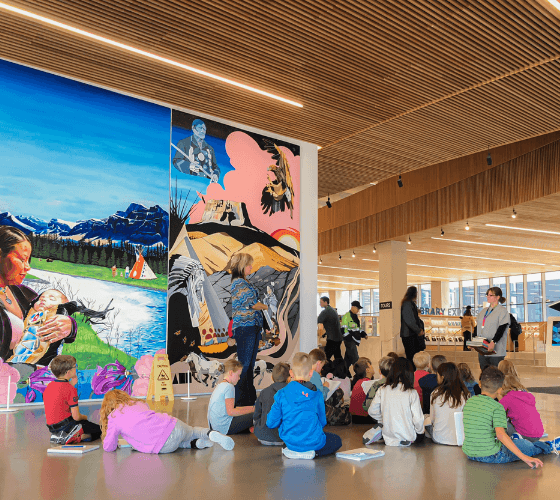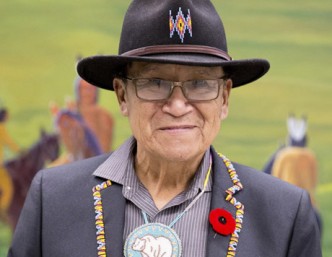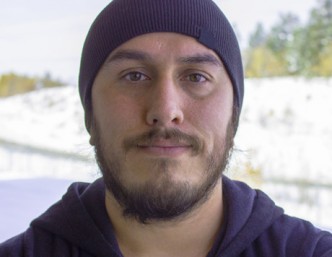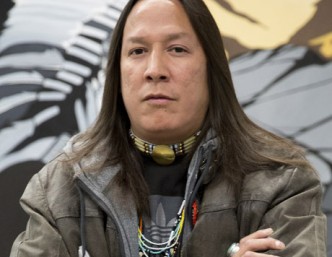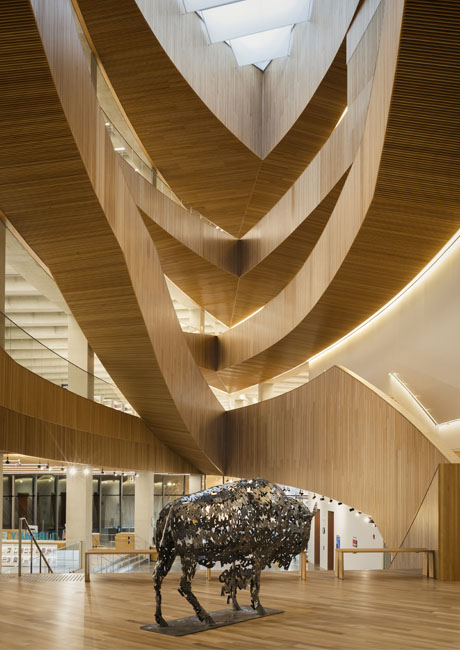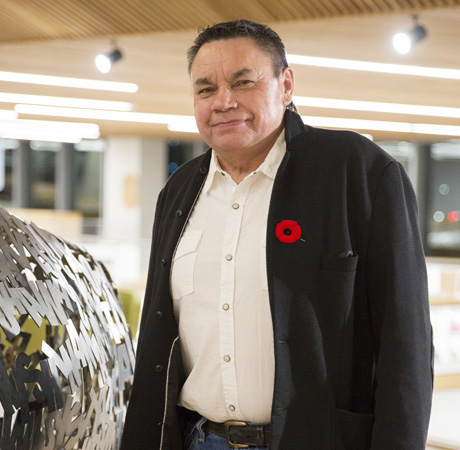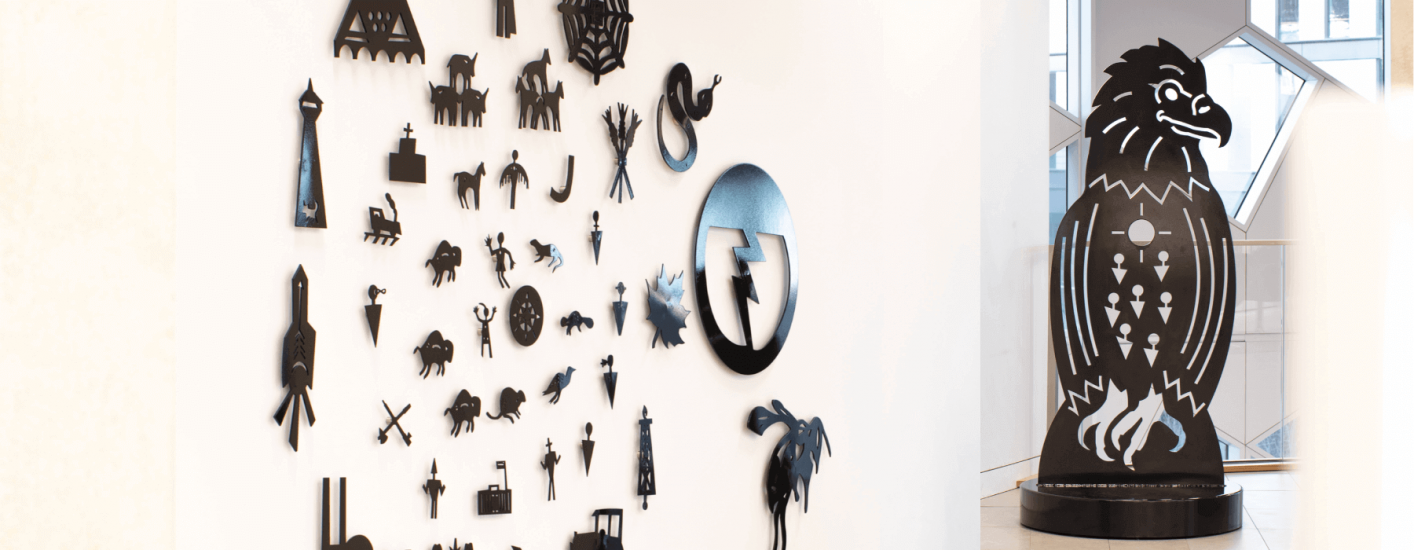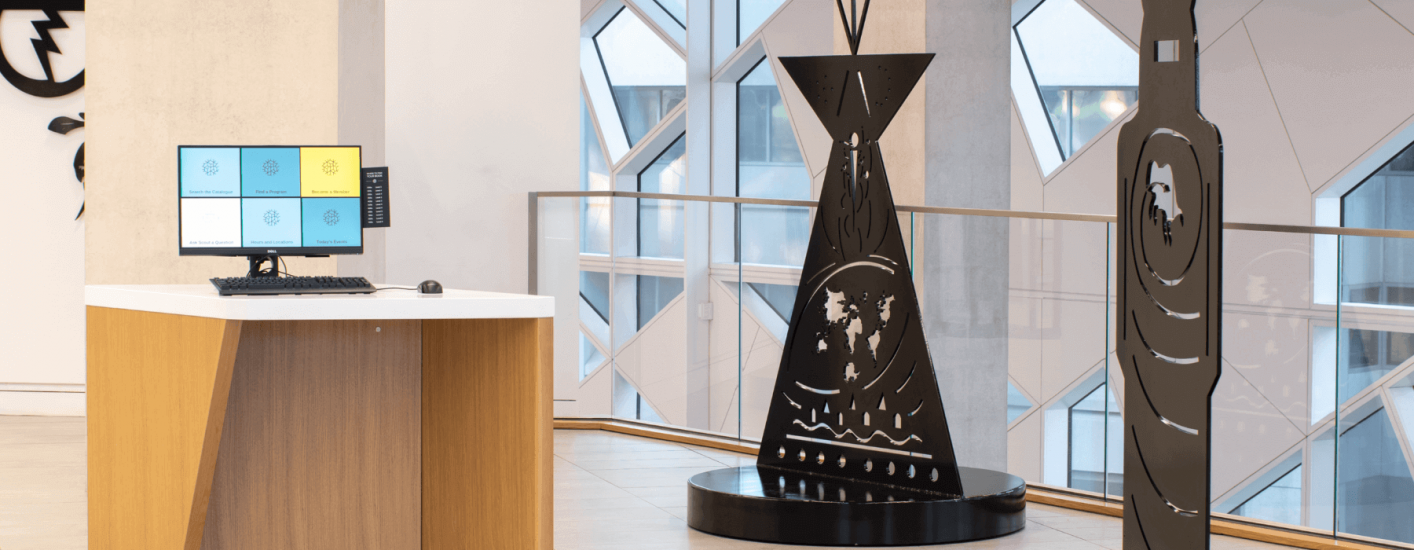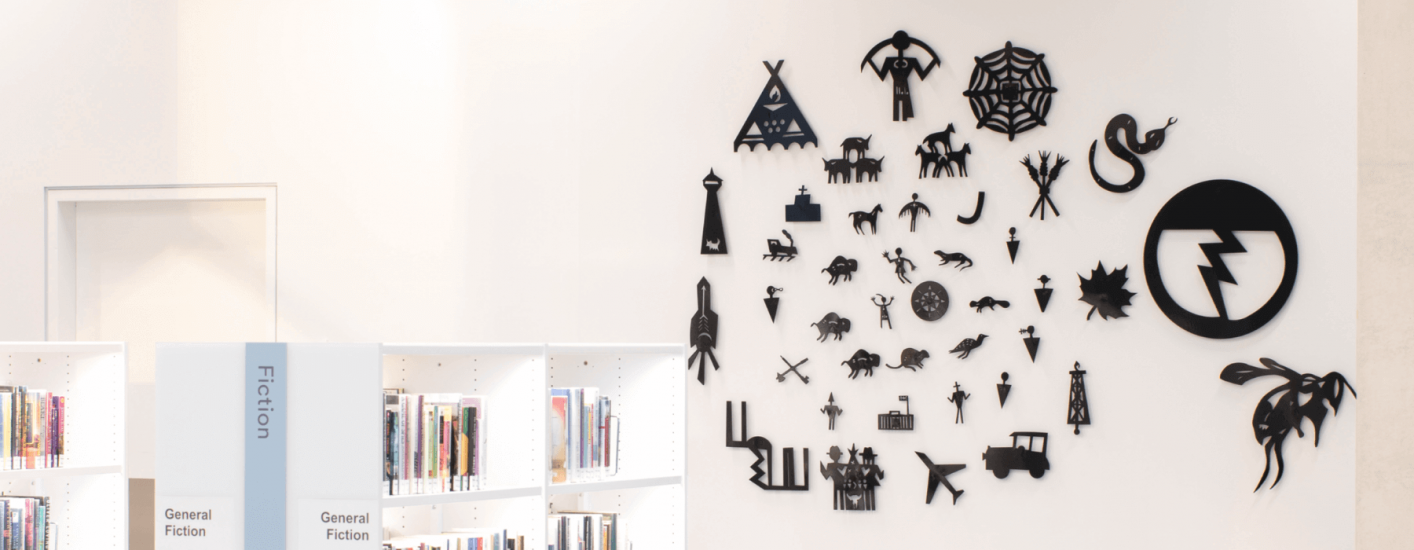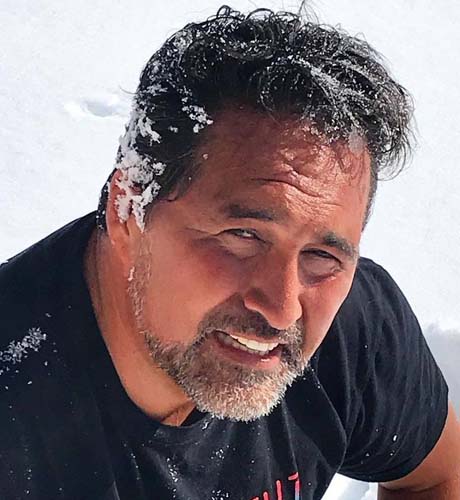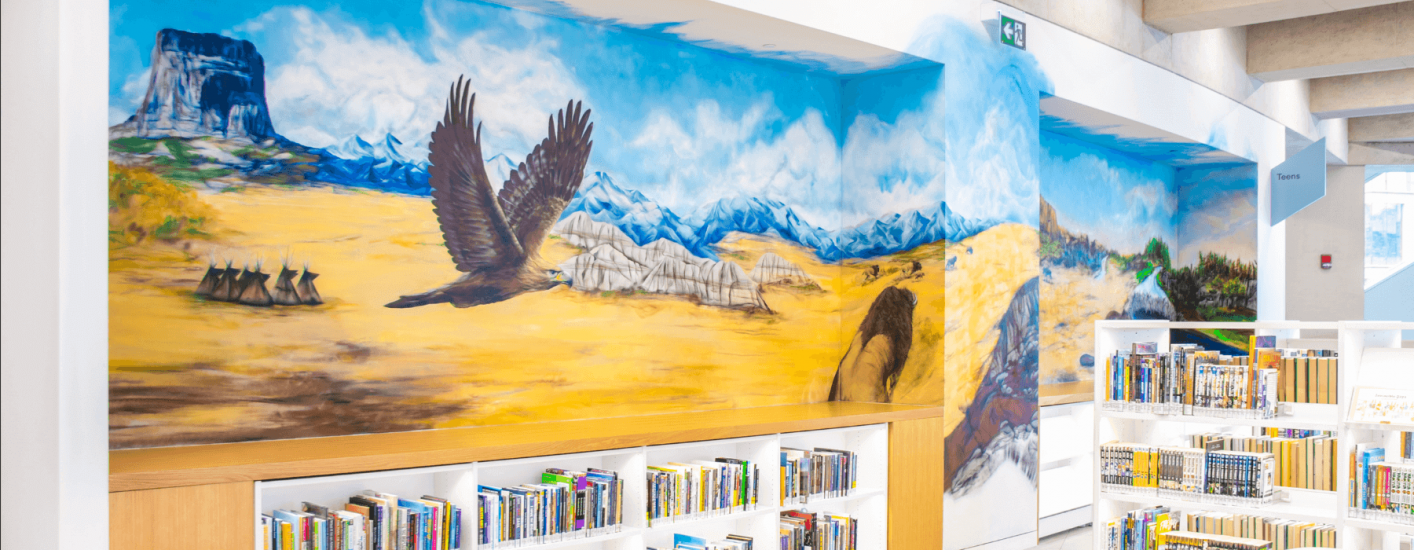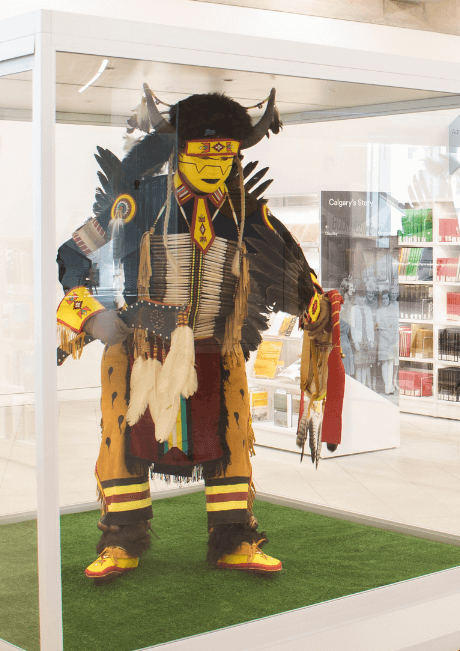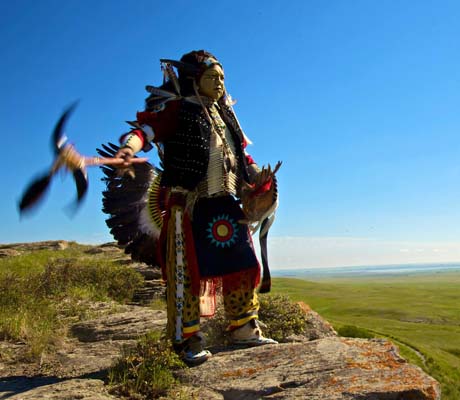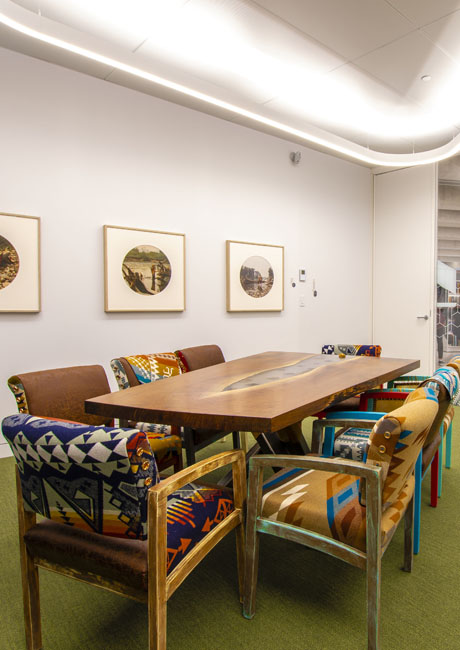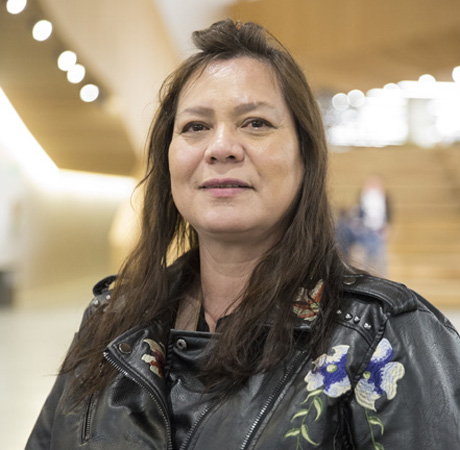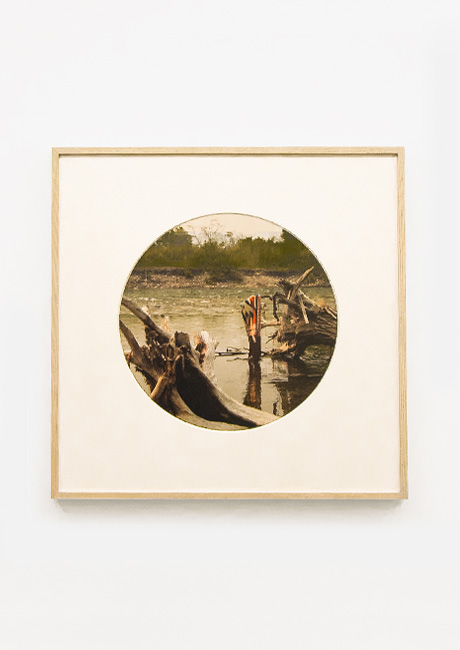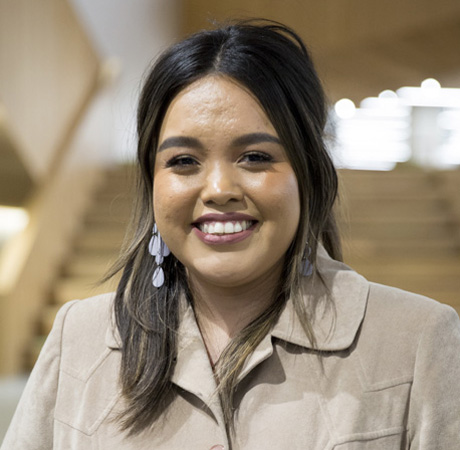Art as Language
Adrian Stimson
Fiction Collection, Level 2 (2019)
Mnemonic devices and symbolic gestures are key components of the pictographic Blackfoot language, found in historic winter counts, ledger drawings, and petroglyphs. Traditionally, it has often been up to the artist to determine the symbol that represented a single word or idea — and equally up to the reader to decipher their own personal meaning.
Over time depictions of words and ideas have morphed, but there has always been recognition of previous artist’s ideas present — a consistency that binds language, culture and identity together.
In consultation with Blackfoot knowledge keepers, Stimson created a narrative in the traditional written language of his nation that represents and resonates with the territories and nations of Mohkinstsis.
Shared in figures of steel and aluminum, this story transcends two-dimensional space and brings language into the three-dimensional environment, symbolic of the physicality of traditional oral languages.
The interaction between floor and wall elements helps the viewer to visualize a uniquely Indigenous way of thinking about communicating with each other.

